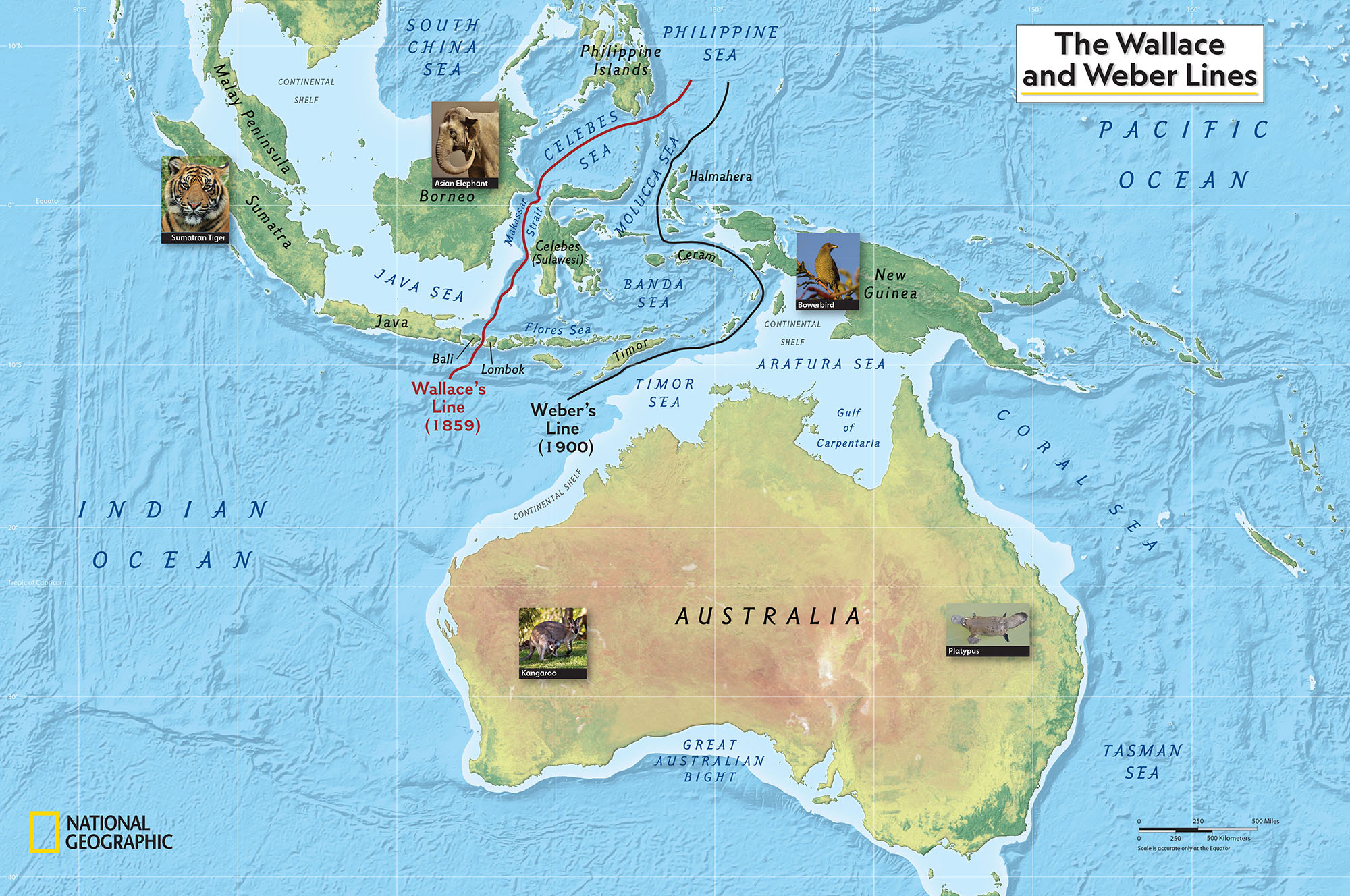
Why in the news?
The Wallace Line, a distinct transition zone between Asia and Australia, has long fascinated researchers due to its unique characteristics.
What is Wallace Line?
|
Details |
| What is it? |
- A bio-geographical boundary separating the eco-zones of Asia and Australia.
- It was identified by British explorer Alfred Russel Wallace in 1863 during his explorations.
- It is an imaginary line that intersects the Lombok Strait between the Indonesian islands of Bali and Lombok to the south, and extends north through the Makassar Strait between Kalimantan (Borneo) and Sulawesi.
|
| Unique Features |
- Divides species with distinct evolutionary histories.
- Asiatic species (tigers, elephants) are found to the west; Australian fauna (kangaroos, marsupials) dominate the east.
- Despite their geographical proximity, these species evolved separately.
|
| Impact on Wildlife |
- Birds and mammals are particularly influenced, with few species crossing the line.
- Flora is less affected, though species like Eucalyptus stay on the Australian side.
|
| Impact on Marine Species |
- While the Wallace Line is a barrier for terrestrial species, it doesn’t stop marine life.
- The area between the Wallace Line and the Sahul Shelf (near Australia) is known as the Coral Triangle, the most biodiverse marine environment on Earth.
|
| Formation |
- Result of Australia’s drift from Antarctica and subsequent collision with Asia around 35 million years ago.
- Climate shifts led to cooler, drier Australia and tropical Asia.
- This collision created a deep-water channel that still acts as a natural barrier for species migration.
|
| Pleistocene Epoch Influence |
- During the Pleistocene epoch, lower sea levels exposed land bridges.
- Deep waters between Asia and Australia prevented species migration, maintaining the boundary.
|
Note:
Weber Line more accurately defines the balance point where the influence of Asian and Australian species is nearly equal, whereas the Wallace Line marks a sharper divide. |


